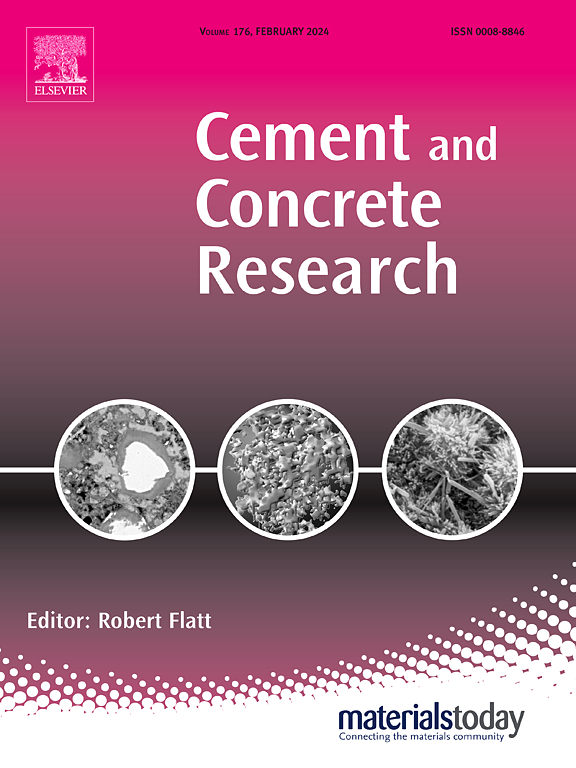Degradation mechanisms of low-calcium fly ash-based geopolymer mortar in simulated aggressive sewer conditions
IF 10.9
1区 工程技术
Q1 CONSTRUCTION & BUILDING TECHNOLOGY
引用次数: 0
Abstract
Alkali-activated geopolymers are increasingly studied as alternatives to Ordinary Portland Cement (OPC) concrete for use in challenging service environments. Low-calcium geopolymers have been advocated to mitigate Microbial-Induced Concrete Corrosion (MICC) in sewer pipes; however, their broader acceptance as a repair material for sewer rehabilitation remains to be established. This study evaluated the degradation mechanism of low-calcium fly ash-based geopolymer (FAGP) repair mortar under laboratory-simulated sewer conditions by exposing it to varying concentrations of sulphuric acid (pH 0.5, 1, and 4) for extended durations. The corrosion of the mortar samples was assessed based on visual changes, mass loss, residual mechanical strength, pore evolution, and ion transport over three exposure durations. Comparative analysis with OPC counterparts served as a benchmark. The degradation of FAGP and OPC due to acid exposure appears to escalate with both acid concentration and exposure. However, FAGP displayed superior performance by maintaining their shape and retaining approximately 30% of mechanical strength even after 3000 h of exposure under highly aggressive sewer conditions at pH 0.5. In contrast, OPC fails to endure acid exposure beyond 2000 h. The loss of matrix integrity primarily stems from ion leaching, supported by Scanning Electron Microscopy and Mercury Intrusion Porosimetry analysis, which revealed the creation of intrinsic pores facilitating the ingress of sulphate ions into the matrix. X-Ray Diffraction (XRD) and Fourier Transform Infrared (FTIR) Spectroscopy patterns indicate no significant phase alterations, confirming this phenomenon. In conclusion, this study demonstrated that FAGP mortar is more resilient and durable in mild to aggressive sewer conditions than OPC.

低钙粉煤灰基地聚合物砂浆在模拟恶劣下水道条件下的降解机理
碱活化地聚合物作为普通硅酸盐水泥(OPC)混凝土的替代品,在具有挑战性的使用环境中得到越来越多的研究。低钙地聚合物已被提倡用于减轻污水管道中微生物引起的混凝土腐蚀(MICC);然而,它们是否被广泛接受为下水道修复的修复材料仍有待确定。本研究通过将低钙粉煤灰基地聚合物(FAGP)修复砂浆长时间暴露于不同浓度的硫酸(pH 0.5、1和4)中,评估了实验室模拟下水道条件下低钙粉煤灰基地聚合物(FAGP)修复砂浆的降解机制。在三个暴露时间内,砂浆样品的腐蚀评估基于视觉变化、质量损失、残余机械强度、孔隙演化和离子传输。与OPC同行的比较分析作为基准。由于酸暴露,FAGP和OPC的降解似乎随着酸浓度和暴露而升级。然而,即使在pH为0.5的高腐蚀性下水道条件下暴露3000小时后,FAGP也能保持其形状并保持约30%的机械强度,表现出优异的性能。相比之下,OPC不能承受超过2000小时的酸暴露。基质完整性的损失主要源于离子浸出,扫描电子显微镜和汞侵入孔隙法分析表明,固有孔隙的产生促进了硫酸盐离子进入基质。x射线衍射(XRD)和傅里叶变换红外(FTIR)光谱图显示没有明显的相变化,证实了这一现象。总之,本研究表明,在温和到恶劣的下水道条件下,FAGP砂浆比OPC更具弹性和耐用性。
本文章由计算机程序翻译,如有差异,请以英文原文为准。
求助全文
约1分钟内获得全文
求助全文
来源期刊

Cement and Concrete Research
工程技术-材料科学:综合
CiteScore
20.90
自引率
12.30%
发文量
318
审稿时长
53 days
期刊介绍:
Cement and Concrete Research is dedicated to publishing top-notch research on the materials science and engineering of cement, cement composites, mortars, concrete, and related materials incorporating cement or other mineral binders. The journal prioritizes reporting significant findings in research on the properties and performance of cementitious materials. It also covers novel experimental techniques, the latest analytical and modeling methods, examination and diagnosis of actual cement and concrete structures, and the exploration of potential improvements in materials.
 求助内容:
求助内容: 应助结果提醒方式:
应助结果提醒方式:


